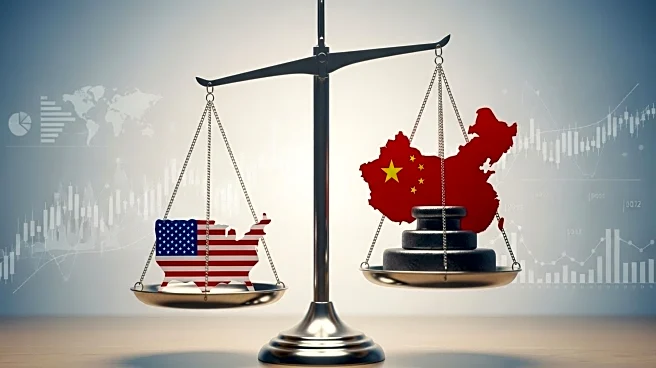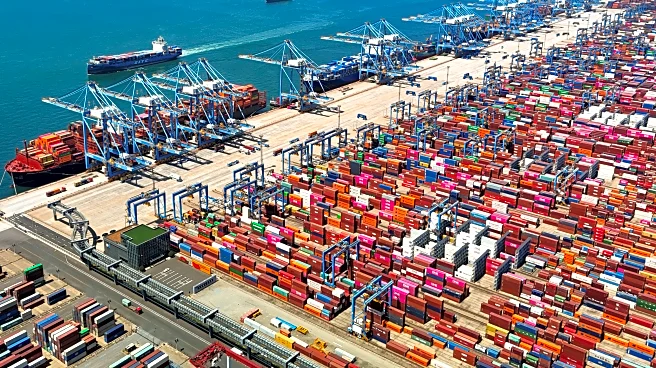What's Happening?
President Trump has announced plans to impose a 100% tariff on Chinese goods by November 1, in response to China's restrictions on critical mineral exports. This move ends an uneasy truce between the U.S. and China, escalating trade tensions between the two largest economies. The tariffs are part of Trump's broader strategy to challenge China's dominance in global trade and protect U.S. industries. The announcement has raised concerns among U.S. soybean producers, who fear the impact on exports.
Why It's Important?
The 100% tariff on Chinese goods could significantly impact U.S. industries reliant on imports, leading to higher consumer prices and potential disruptions in supply chains. The escalation in trade tensions may affect the U.S. economy, potentially slowing growth and impacting international trade dynamics. The measures reflect broader geopolitical dynamics and could influence future trade negotiations and economic policies.
What's Next?
The tariff announcement is expected to impact consumer prices and industry costs, with potential implications for global trade dynamics. Stakeholders may seek to negotiate trade agreements to mitigate the impact of these measures. The ongoing trade tensions with China could lead to further economic and diplomatic developments, influencing global trade dynamics.
Beyond the Headlines
The tariff announcement highlights the challenges of balancing domestic economic protection with international trade relations. It raises questions about the long-term impact on global trade competitiveness and economic growth. The broader geopolitical implications of these trade policies could shape future economic and diplomatic strategies.












